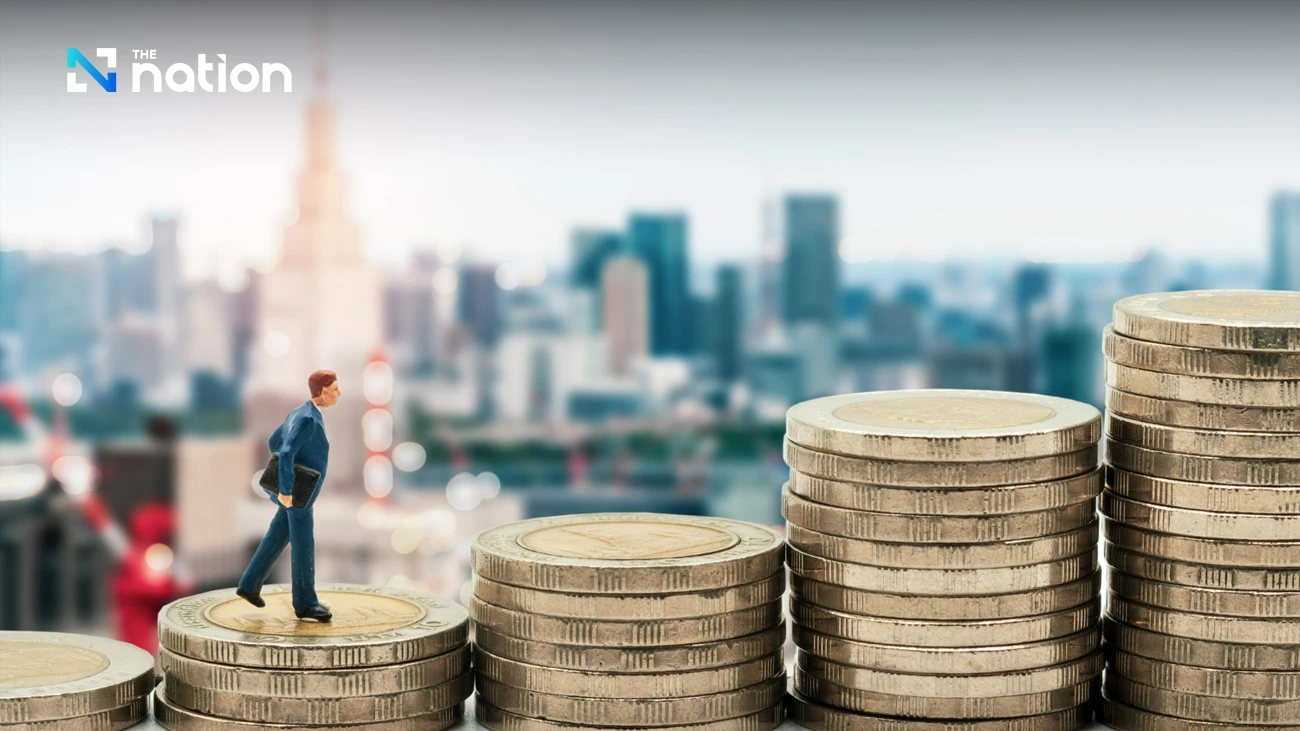
The Thai baht has strengthened sharply this week, recently reaching 32.70 baht per US dollar, continuing its appreciation trend since the beginning of the month amid global financial market volatility and rising global gold prices.
This sudden strengthening has raised concerns for Thailand’s fragile economy, as it does not reflect robust domestic recovery. Instead, analysts warn that the appreciating baht may further pressure the economy, particularly the export sector, which remains a key growth driver.
Kanchana Chokpaisansilp, head of research at Kasikorn Research Center, noted that the current baht level represents a significant appreciation from earlier this month, driven primarily by two key factors.
The first is a continued rise in global gold prices, prompting investors to shift toward gold as a safe haven amid ongoing geopolitical tensions—particularly the unresolved Russia–Ukraine conflict.
The second factor is the weakened US dollar, pressured by ongoing domestic economic uncertainty, concerns over fiscal stability, and Moody’s recent downgrade of the US credit outlook.
She explained that despite the lack of a breakthrough in the Russia–Ukraine talks, global markets remain on edge, contributing to capital shifts that favor the Thai baht. Meanwhile, the lack of clarity on US Federal Reserve monetary policy has further eroded investor confidence in the dollar.
Negative Impact on Thai Economy
While a strong baht lowers costs for importers, it presents significant challenges for exporters and those earning income in foreign currencies. This comes at a time when Thailand’s economic fundamentals remain weak and lack strong growth momentum.
“The baht’s appreciation, particularly in the absence of supportive domestic factors, presents a major policy challenge amid heightened economic fragility,” Kanchana said.
She also pointed out that, in addition to appreciating, the baht has become more volatile. Since the beginning of 2025, the baht's volatility has reached 8.7%, up from 8% in 2024, highlighting the increasing difficulty for policymakers in managing currency stability during this uncertain period.
Baht’s Rise Deemed "Unusual"
Sanguan Jungsakul, Senior Director of Investment Market Research at Krungthai Bank’s Financial Market Business Division, said that the current appreciation of the Thai baht is unusually rapid and primarily driven by short-term speculative flows into gold and a weaker US dollar, rather than improvements in Thailand’s economic fundamentals.
The main factor behind this appreciation, he explained, is the surging global gold price, which has climbed more than 27% year-to-date (YTD). This has triggered increased demand for baht in global markets as investors convert currencies to purchase gold—thereby increasing the baht’s value globally.
“The primary factor behind the baht’s strength is clearly gold,” Sanguan said. “Given the strong correlation—approximately 0.5—between gold and the baht, every 10-baht increase in gold tends to strengthen the baht by about 0.5 baht. This effectively turns the baht into a commodity currency.”
He added that, amid heightened global tensions—particularly in the Middle East and the Gaza Strip, as well as other geopolitical uncertainties—investors have continued to seek safe-haven assets, which have supported further gains in gold and, by extension, the baht.
Baht Rises Alongside Won and Yen - But It Shouldn’t
However, Sanguan expressed concern that the baht’s appreciation is mimicking trends seen in the South Korean won, Japanese yen, and Taiwan dollar, which have all strengthened significantly amid the dollar’s weakness. But unlike those economies, Thailand does not hold large dollar-denominated assets, which would typically drive such capital repatriation when the dollar declines.
“Thailand doesn’t have as many dollar assets as those countries, so our currency should not be appreciating as quickly or strongly,” he said. “From the end of last year to now, the strongest performers are Japanese yen (+9.14%), Taiwan dollar (+8.79%), and Korean won (+6.18%). Thai baht, meanwhile, was ranked in sixth at +4.20%. That’s unusually high for Thailand and suggests something is off, even though the baht’s movement may seem mid-range regionally.”
Baht Strength Tracks Regional Currencies
Wachirawat Banchuen, Senior Financial Market Strategist at Siam Commercial Bank, stated that the Thai baht’s recent appreciation—reaching its strongest level in weeks—follows the trend of major Asian currencies, influenced primarily by external factors. These include the rising prices of crude oil and gold, driven by Middle East tensions, and speculation that the Japanese government may engage in discussions with the U.S. regarding the weakening U.S. dollar.
Despite this, fund flows into Thailand have not shown a clear upward trend, suggesting that the baht's strength is not rooted in domestic economic fundamentals. It does not reflect a strong recovery or export boom, he added.
Looking ahead, he expects the baht to move within the 32.50–33.00 baht per US dollar range, but it could strengthen to 32.30 baht if a significant breakthrough occurs in U.S.-Japan negotiations.
“Unless new positive developments emerge, we believe the baht will not appreciate much further. The likelihood of it breaking below 32 baht meaningfully remains limited—unless government-level progress strengthens foreign investor confidence,” Wachirawat said.
…
To cope with these challenges, Wisit proposed three measures:
• Use of the baht in cross-border trade, especially with neighboring countries, which has already been implemented to some extent and can help mitigate currency exposure for both buyers and sellers.
• Adopting multiple foreign currencies—such as the yen and yuan—for trade, facilitated by existing bilateral agreements between the Bank of Thailand (BOT) and regional central banks.
• Hedging against currency risk, though this comes with added costs to businesses. Profit margins, already thin, must then be shared with banks for such protection, reducing competitiveness.
Source: The Nation
Share: